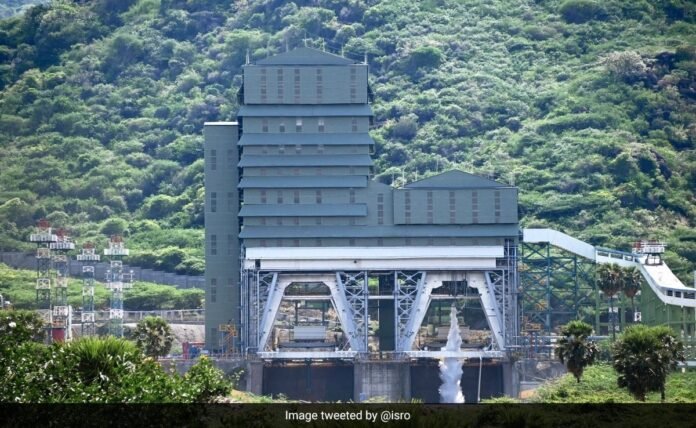
The Indian Space Research Organisation (ISRO) has achieved a significant milestone in space propulsion technology with the successful hot test of its Semicryogenic engine. This cutting-edge engine is designed to power the Semicryogenic booster stage of the Launch Vehicle Mark-3 (LVM3), significantly enhancing India’s launch capabilities. The test, conducted at the ISRO Propulsion Complex in Mahendragiri, Tamil Nadu, marked a crucial step in advancing India’s space ambitions.
Understanding the Semicryogenic Engine
The Semicryogenic engine, designated SE2000, operates using Liquid Oxygen (LOX) and Kerosene as propellants. This combination offers significant advantages over traditional hypergolic propellants, being non-toxic and environmentally safer. Moreover, it provides enhanced thrust and efficiency, enabling ISRO to increase the payload capacity of LVM3 from 4 tonnes to 5 tonnes in Geosynchronous Transfer Orbit (GTO).
Successful Hot Test and Key Achievements
On March 28, 2025, ISRO conducted a hot test of the SE2000 engine. The test, which lasted 2.5 seconds, successfully demonstrated smooth ignition and operational efficiency. It validated the performance of critical subsystems, including the pre-burner and turbo pumps, confirming that all parameters met expected benchmarks. This marks a major step toward qualifying the engine for future missions.
Major Subsystems of SE2000
The SE2000 engine consists of several essential components:
- Thrust Chamber – Generates thrust to propel the rocket.
- Pre-Burner – Plays a key role in initiating combustion.
- Turbo Pump System – Ensures efficient fuel and oxidizer delivery.
- Control Components – Regulate the engine’s operation.
- Start-Up System – Initiates the ignition sequence.
Each of these subsystems underwent rigorous qualification tests before being integrated into the Power Head Test Article (PHTA), which serves as the test configuration for engine validation.
State-of-the-Art Test Facility and Future Plans
The Semicryogenic Integrated Engine Test (SIET) facility, inaugurated in February 2024 at ISRO’s Propulsion Research Complex, played a crucial role in the successful test. This advanced facility enables ISRO to conduct high-fidelity assessments of engine performance. Moving forward, further tests on the PHTA will focus on evaluating the propellant feed system, including turbo-pumps and the pre-burner, to ensure flawless operation in actual missions.
Challenges in Development
Developing a high-thrust semicryogenic engine presents numerous technological challenges. The technology is rare and mastered by only a handful of spacefaring nations. The engine hardware must withstand extreme temperatures and oxidizer-rich combustion environments, requiring advanced engineering solutions. ISRO’s collaboration with Indian industries has been instrumental in overcoming these hurdles and realizing this complex technology.
Significance of the Breakthrough
The development of the SE2000 Semicryogenic engine represents a leap forward for India’s space program. With increased payload capacity, ISRO will be better equipped to launch heavier satellites, support interplanetary missions, and participate in commercial space launches. This achievement further solidifies India’s position as a leading global space power and sets the stage for even more ambitious endeavors in the future.
With continued advancements in propulsion technology, ISRO is paving the way for cost-effective, efficient, and sustainable space exploration, bringing India closer to its goal of self-reliance in high-end space technologies.

